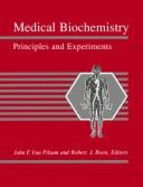Introduction of Biochemistry
Cell
- Introduction to Biochemistry
- Cell ( biomedical aspects )
- Cell membrane structure and proteins
Body Fluids
- Structure and properties of water
- Weak acids and bases
- Concept of pH and pK
- Buffers, their mechanism of action
- Body buffers
Carbohydrates
- Definition and classification
- Biochemical functions & Significance of Carbohydrates
- Structure and properties of Monosaccharides & Oligosaccharides
- Structure and properties of Polysaccharides
Metabolism of Carbohydrates
- Digestion & Absorption of Carbohydrates
- Glycolysis & its regulation
- Citric acid cycle
- Inter conversion of carbohydrates, lipids and proteins
- Biochemistry of diabetes mellitus
- Glycogenolysis
Lipids
- Classification of lipids
- Fatty acids: chemistry
- Structure and properties of Triacylglycerols and compound lipids
- Cholesterol: Chemistry, Functions & clinical Significance
- Digestion & Absorption of Lipids
- Role of bile salts and bile acids
- Metabolism & clinical Significance of Lipoproteins
- Fatty acid oxidation biosynthesis and metabolism of Triglycerides
- Metabolism & clinical Significance of Cholesterol
- Ketone bodies
Amino Acids Peptides and Proteins
- Amino acid: Classification
- Functions and significance
- Classification of proteins
- Tertiary and quaternary structures of proteins
- Fibrous proteins (collagen and elastins) and Globular proteins
- Classification of proteins based on physiochemical properties
- Digestion of Proteins & Absorption of Amino Acids
- Transamination & Deamination of Amino Acids, deamination, methylation, decarboxylation,
interconversion of amino acids.
- Urea cycle
- Specialized products formed from amino Acids
- Metabolic disorders






